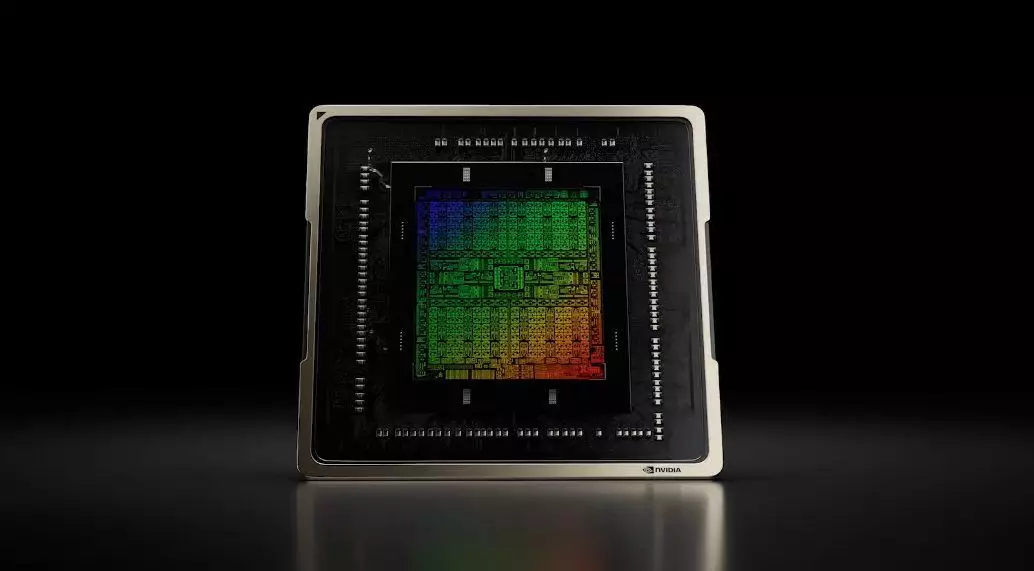Nvidia, a household name in the realm of graphics processing, has long stirred curiosity regarding its potential development of Arm processors. Over the past year, speculation has run rampant about the architectural design, intended markets, and functionality of these chips. Recent rumors, primarily sourced from renowned tech commentator Moore’s Law is Dead (MLID), suggest that these forthcoming processors may cater specifically to gaming laptops. If true, such a move could revolutionize the portable gaming experience, bringing powerful performance to the mobile arena.
According to the insights shared by MLID, it appears that an Nvidia partner has hinted at a power target of “up to 80 W” for these new chips. This suggests a remarkable balance between energy efficiency and performance, positioning the Nvidia Arm-based unit as a direct competitor to high-performance laptop GPUs, specifically the RTX 4070, which operates at a slightly lower power range of around 65 W. Such comparisons indicate Nvidia’s intent to deliver performance metrics that rival current benchmarks in the gaming laptop landscape.
Furthermore, MLID indicates that Nvidia may be aligning with Dell’s Alienware brand to launch this new Arm-based APU, hinting at the prospect of gaming laptops that utilize this new technology in tandem with Windows. The potential for an Alienware device powered by Nvidia both in CPU and GPU could herald a significant advancement in the gaming laptop market, merging high-performance graphics capabilities with a power-efficient architecture.
A significant aspect of these developments is the competitive landscape that Nvidia is entering. According to reports, Nvidia aims to position its Arm-based APU as a serious contender against AMD’s Strix Halo APUs. These AMD chips, specifically the Ryzen AI 300 Max series, are anticipated to deliver outstanding performance, featuring a robust architecture with RDNA 3.5 compute units. The flagship Ryzen AI Max+ 395 is set to include an impressive count of 40 RDNA 3.5 CUs along with 16 CPU cores. This hardware suggests that AMD is firmly dedicated to raising the stakes in mobile gaming performance.
Nvidia’s endeavor to match or even exceed this level of performance with its own upcoming chip can be seen as a pivotal strategy as the competition heats up. With the ever-evolving demands of gamers seeking high-quality graphics in a portable format, the pressure is on for both companies to innovate and deliver superior products. Thus, Nvidia’s goal of achieving RTX 4070 mobile-level performance could become crucial in this ongoing rivalry.
Further stimulating interest in Nvidia’s upcoming Arm APU is the anticipated inclusion of a Neural Processing Unit (NPU) alongside the traditional CPU and GPU. Nvidia’s strength in artificial intelligence places it in a unique position to leverage NPU capabilities, potentially enhancing gaming functionalities such as real-time physics computations and machine learning-driven graphical enhancements.
This focus on integrating AI capabilities signifies a broader trend in the industry toward creating smarter, more adaptive gaming experiences that learn from user behaviors. Should Nvidia successfully implement a powerful NPU within its new architecture, it could not only attract gamers but also open avenues for developers to exploit these features within their games, marking a significant leap for gaming technology as a whole.
However, challenges remain regarding the implementation of Windows on Arm. Nvidia’s alignment with Qualcomm rival MediaTek for production raises further questions about manufacturing strategies and how they will affect integration with existing platforms. The relationship between Nvidia’s advancements and Microsoft’s rumored conclusion of its exclusive Qualcomm partnership could provide a pivotal moment for the proliferation of Arm architecture in the gaming segment.
Currently, efforts towards enhancing Windows on Arm, including vast improvements in compatibility and performance, are underway. Recent updates symbolize progress, with indications that AVX and AVX2 instructions are being incorporated, which could facilitate a broader range of game support on this operating system. Nvidia’s commitment to making its gaming experience feasible on Windows Arm could catalyze an entire shift within the gaming industry.
The potential development of Nvidia’s Arm-based APU presents intriguing possibilities for both gaming enthusiasts and the technology sector at large. As competitors like AMD ramp up their offerings, the challenge for Nvidia lies in harnessing its capabilities and delivering on the promise of a game-changing product. By marrying performance with power efficiency and cutting-edge features like AI, Nvidia has the opportunity to revolutionize mobile gaming. As we stand on the edge of this potential future, only time will tell whether these lofty ambitions will come to fruition and change the gaming landscape as we know it.

